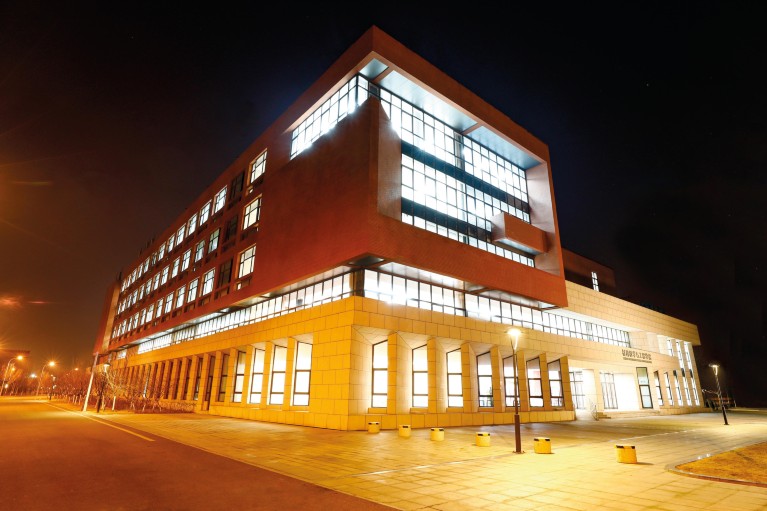
Credit: Nankai University
China’s significant increase in research investment has already brought a boom in the country’s research output. The gains are probably best illustrated in the field of material science, in which the number of publications has grown from almost none in the early 1980s to the largest in the world now. With applications ranging from manufacturing and electronics, to energy and biomedicine, material science is of profound interest to government funders and a field on which national economies rely heavily.
An excellent case study is the growth of material science at Nankai University, one of China’s most prestigious. Built on its strengths in chemistry and physics, Nankai formally established a material science and engineering programme in 1999. With funding support from the national government, the programme has quickly developed its research capacities in new energy materials, catalytic materials, photo-electro-magnetic materials, rare earth and inorganic functional materials, carbon nanomaterials, and photonics/electronics materials. Driven by the national strategy to find new materials to boost manufacturing and technological breakthroughs, the School of Materials Science and Engineering (MSE) was established at Nankai in 2015, along with the National Institute of Advanced Materials, the latter aiming at new industrial applications. In 2017, Nankai’s material science programme was selected into the national ‘double first-class’ initiative, opening a new chapter of advancement and growth.
Credit: Nankai University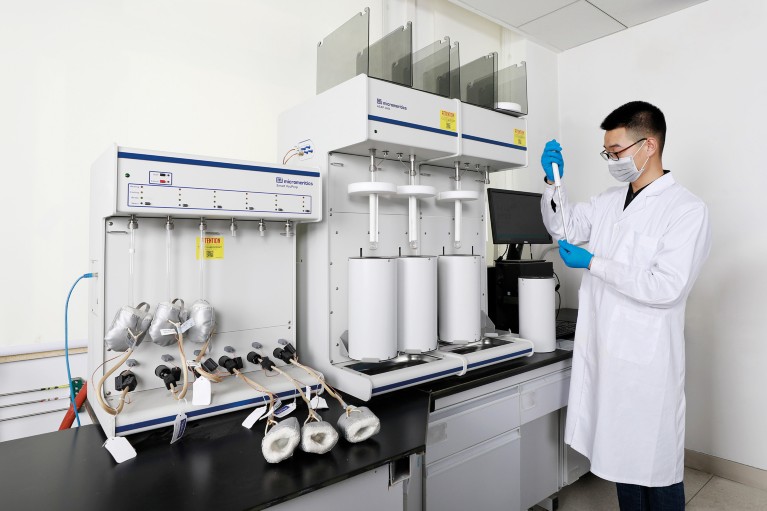
Data from the Essential Science Indicators (ESI) in 2018 show that Nankai is ranked among the global top 1.2‰, or 97th, in material science, up from 116th in mid-2017. It leads among Chinese universities in the number of citations per publication in journals listed in the Science Citation Index (SCI). Two MSE faculty members were listed among the 2018 Global Highly Cited Researchers by Clarivate Analytics.
Booming research results
One area of leading research performance at MSE is rare earth functional materials, with 30 highly cited papers tracked by ESI. “China has abundant rare earth resources, but a comprehensive scheme for using them is yet to be developed,” said Yan Chunhua, a member of the Chinese Academy of Sciences (CAS), and head of the MSE’s Centre for Rare Earth and Inorganic Functional Materials. The centre’s researchers develop novel technological processes of rare earth products and explore new applications of rare earth materials, ranging from energy and catalysis, to high-precision manufacturing and sensors. Their results have led to more than 10 patents.
In energy materials, the development of ‘breathable’ lithium-air batteries is a good example of innovation at the MSE Institute of New Energy Material Chemistry. These differ from existing technologies of electrocatalytic materials because they use CO2 for energy storage, and combine technologies for lithium oxygen (Li-O2) and lithium carbon dioxide (Li-CO2) batteries to create a lithium battery that can operate in the air. “Its high-capacity electricity storage can potentially accelerate the replacement of fossil fuel vehicles with electric ones, and help reduce carbon emissions by facilitating the development of renewable energy resources,” said Zhou Zhen, the institute’s head. Its other achievements include developments in high-energy density batteries based on lightweight, multi-electron reaction materials, rechargeable solar cells capable of storing energy, supercapacitor and ultra-batteries.
Credit: Nankai University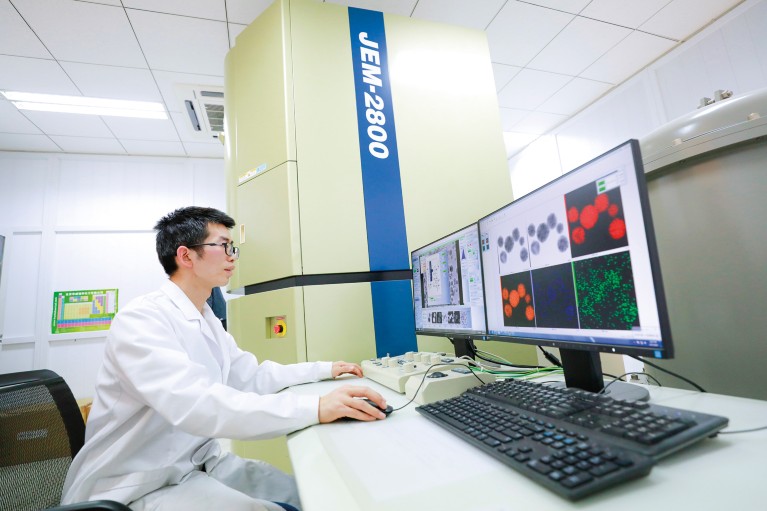
Prize-winning science
At the MSE Centre for Optical, Electrical, and Magnetic Materials, Bu Xian-He, the centre head and dean of MSE, leads a group that focuses on constructing inorganic solid materials for energy storage and conversion. They won the second prize of the National Natural Science Award in 2014 for their work on the synthesis, structure modulation, and properties of coordination polymers. Researchers at the centre also work on inorganic-organic hybrid magnetic and polymer materials, and construction of functional molecular aggregate materials.
Credit: Nankai University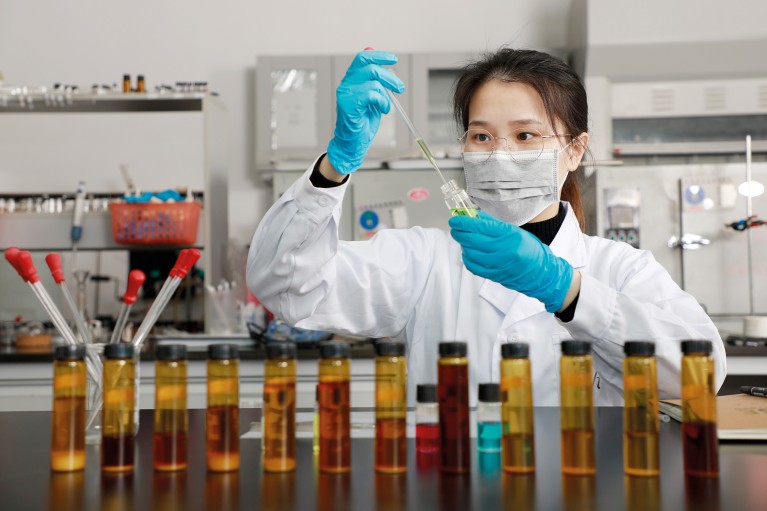
MSE researchers on new catalytic materials have established a new methodology for characterizing highly active intermediates in catalytic reactions by integrating technologies of chemical capture, spectroscopic analysis and computational simulation, which has facilitated the study of molecular sieve materials. They have also developed the AlPO-34 molecular sieve, a crystalline material with regular pores the size of a molecule for catalysis. Their results have gained 20 national patents.
To meet growing needs for new materials and devices for information and energy, researchers at the MSE Centre for Photonics/Electronic Materials have made progress in silicon-based illumination devices. They have designed nano-layered compound films with specific photoelectric properties and developed their applications in sensors, supercapacitors and other devices.
Outlook to the future
Already a leader in new materials research, MSE is committed to producing transformative research, and fostering innovative talent with a solid scientific basis and technical skills. It aims to become a world-class research centre, an educational base, and an industry-research collaboration hub for new materials research, promoting transfer of technologies to real-world applications.
Credit: Nankai University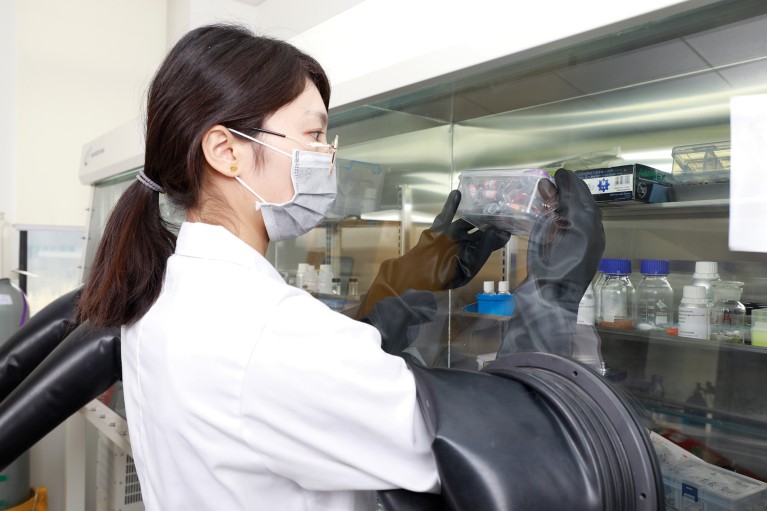
In an effort to develop cross-disciplinary and application-based research, the school is growing its computational materials science and materials genome research. Investments are also being made to advance research on biomedical, environmental, and intelligent materials and devices to better meet societal demands. In educational programmes, MSE encourages the integration of natural science and engineering to form interdisciplinary teams.
As Nankai University has received government support for building a world-class university, MSE is leveraging university and government resources to expand its current provincial and national key research platforms. Continual investment and infrastructure support will ensure a vibrant future for MSE.


